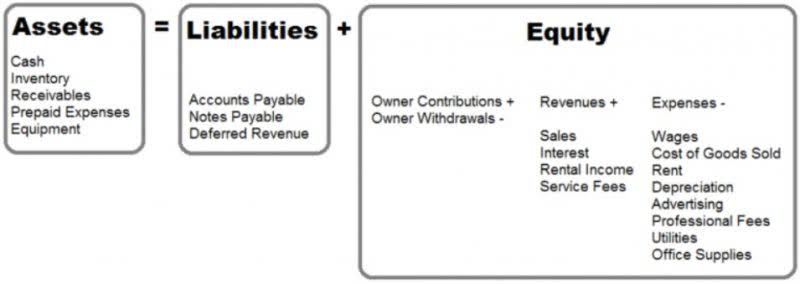
To manufacture a salable product, a company needs raw material and other resources which form the inventory and come at a cost. Additionally, there is a cost linked to the manufacturing dsi definition of the salable product using the inventory. DSI is calculated based on the average value of the inventory and cost of goods sold during a given period or as of a particular date.
The number is then multiplied by the number of days in a year, quarter, or month. To better understand how days sales in inventory (DSI) are calculated, compared, and analyzed. DSI is considered an efficiency ratio because it measures how efficient a company is at converting its inventory into sales. Using the formula for DSI, we see that it took Procter & Gamble an average of 56.67 days to convert its inventory into sales. On its own, this number provides little value because we would need to compare this to similar companies in the same sector. Sometimes revenues are substituted for COGS, and average inventory balance is used.
Inventory to Sales Ratio
If you can improve your inventory management, you will be able to reduce your Days’ Sales of Inventory. This can be done by implementing better inventory control procedures, such as just-in-time inventory management. A low Days Sales of Inventory number indicates that a company is selling its inventory quickly.
- Therefore, we divide the numerator by 2 to get an average inventory of $5.74 billion for the year 2021.
- These can include progress payments, raw materials, work in progress, and finished goods.
- Carbon Collective partners with financial and climate experts to ensure the accuracy of our content.
- Days Sales of Inventory (DSI) is a useful measure for companies that want to manage their inventory more efficiently.
- In the first version, the average amount of inventory is reported based on the end of the accounting period.
- An important thing to note is that if the average inventory and ending inventory are significantly different, the DSI may be unreliable.
The net factor gives the average number of days taken by the company to clear the inventory it possesses. The carrying cost of inventory, which includes rent, insurance, storage costs, and other expenses related to holding inventory, may directly impact profit margin if not managed properly. In addition, the longer the inventory is kept, the longer its cash equivalent isn’t able to be used for other operations and, thus, opportunity cost is lost. The DSI value is calculated by dividing the inventory balance (including work-in-progress) by the amount of cost of goods sold.
What are the average Days Sales of Inventory for companies in your industry?
These details typically include a description of how a company accounts for its inventory and detailed balances for different subcategories within an inventory account. The days sales in inventory (DSI) is a specific financial metric that’s used to help track inventory and monitor company sales. Knowing how to calculate DIS and interpret the information can help provide insights into the sales and growth of a company. This is often important information that investors and creditors find valuable, and the company size doesn’t usually matter. As well, the management of a company will also be interested in the company’s days sales in inventory.

The company spent a total of $40 billion to produce the goods that were sold in the fiscal year 2017. Since Microsoft manufactures both hardware and software products, by the end of the fiscal year 2017 the inventory was in different forms. Finished goods were worth $1.95 billion, work in progress was worth https://www.bookstime.com/author/charles-lutwidge $385 million, and raw materials of around $665 million. Assuming that the fiscal year ended in 360 days, determine ABC Limited’s Days of Sales in Inventory. The denominator (Cost of Sales / Number of Days) represents the average per day cost being spent by the company for manufacturing a salable product.
What is an example of a days sales in inventory calculation?
The numerator in the quotient above is composed of beginning inventory, the amount of inventory as of the end of the last period, plus ending inventory, or the amount of inventory at the end of the current period. To see our product designed specifically for your country, please visit the United States site. The Days Sales of Inventory will be different for companies with a diverse product mix. Data analytics can help you understand your inventory better and make more informed decisions about stock levels. If you have good relations with your suppliers, you will be able to get the inventory you need in a timely manner.
The figure that you end up with helps indicate the liquidity of inventory management and highlights how many days the current inventory a company has will last. Typically, having a lower DSI is going to be preferred since it means it will take a shorter amount of time to clear inventory. Yet, the average DSI is going to differ depending on the company and the industry it operates. One financial metric that lets you get insights into inventory is the days sales of inventory calculation. Read on to learn all about it, including the formula to calculate it, its importance, and an example of it in use. Days Sales of Inventory (DSI) is calculated by dividing a company’s sales by its average inventory.
It is dependent on the measurement period and when the financial statements were prepared. For example, if the other inputs were taken from an annual financial statement, this variable would equal 365 days (number of days in a year). On the other hand, if this ratio decreases, it can mean that a company’s investment in inventory is decreasing in relation to revenues, or revenues are growing. The inventory to sales ratio provides a big picture on the balance sheet and can indicate whether a more thorough analysis of inventory is needed. An increase in this ratio can indicate a company’s investment in inventory is growing quicker than its sales, or sales are decreasing.
- Thus, DSI should only be used to compare the performance of companies within the same industry.
- Days sales in inventory (also known as Days Inventory Outstanding or DIO) is a metric that measures the number of days it takes for a company to sell its inventory.
- Days sales in inventory (DSI) refers to a financial ratio showing the number of days a company takes to turn over all its inventory.
- The average duration (in days) it takes a business to sell its products or inventory is calculated as Days of Sales of Inventory.
- In addition to performing ratio analysis, you might find that reading the notes to a company’s financial statements is a helpful extra step in inventory analysis.
- Obsolete inventory is inventory that will never be sold because it is outdated or no longer needed.
Plus, there are always going to be costs linked to manufacturing the product that uses the inventory. Obsolete inventory is inventory that will never be sold because it is outdated or no longer needed. Average inventory value is the average value of all inventory items a company has on hand over the course of an accounting period. To determine the DSI, you’ll need to know the cost of goods sold, the cost of average inventory, and the length of the time period for which you’re calculating the DSI. Irrespective of the single-value figure indicated by DSI, the company management should find a mutually beneficial balance between optimal inventory levels and market demand. One must also note that a high DSI value may be preferred at times depending on the market dynamics.
Everything You Need To Master Financial Modeling
This ratio measures the average number of days a company holds inventory before selling it. This ratio widely varies across industries and is most helpful when compared to a company’s peers. XYZ Limited is a leading retail corporation with an average inventory of $15 million. The cost of goods sold on their annual financial statements for 2018 was $300m.
- The Manufacturer Command Set (MCS) is a device-specific command space whose definition is up to the device manufacturer.
- Let’s use a real-world example to calculate the average inventory for Procter & Gamble, a consumer packaged goods (CPG) company.
- Dividing the average inventory of $1.19 billion by the total cost of goods sold (COGS) of $5.42 billion and multiplying by 365, AMDs’ DSI equals 80.23 days.
- To analyze inventory, financial professionals typically use various financial ratios to judge whether a company has any issues with producing and promptly selling its inventory.
- The interface is closed source, which means that the specification of the interface is not open to the public.
Knowing these details will help gain insights into how efficiently inventory is moving. This can make a big difference in understanding storage and maintenance expenses when it comes to holding inventory. These include the average age of inventory, days sales in inventory, days inventory, days in inventory (DII), and days inventory outstanding (DIO). In the formula above, a new and related concept of inventory is introduced which is the number of times a company is able to it’s stock over the course of a particular time period, say annually. To calculate inventory turnover you divide the cost of goods sold by the average inventory.
Therefore, the company wouldn’t be able to use these funds for other operations and opportunities. However, Days Sales of Inventory is not without its drawbacks and it is important to be aware of these before using the metric. Days Sales of Inventory rely on accurate sales forecasts, inventory data, and good customer and supplier relations.
HHS ONC proposes new AI / ML requirements for certified Health IT – JD Supra
HHS ONC proposes new AI / ML requirements for certified Health IT.
Posted: Mon, 17 Apr 2023 07:00:00 GMT [source]












Comentarios recientes